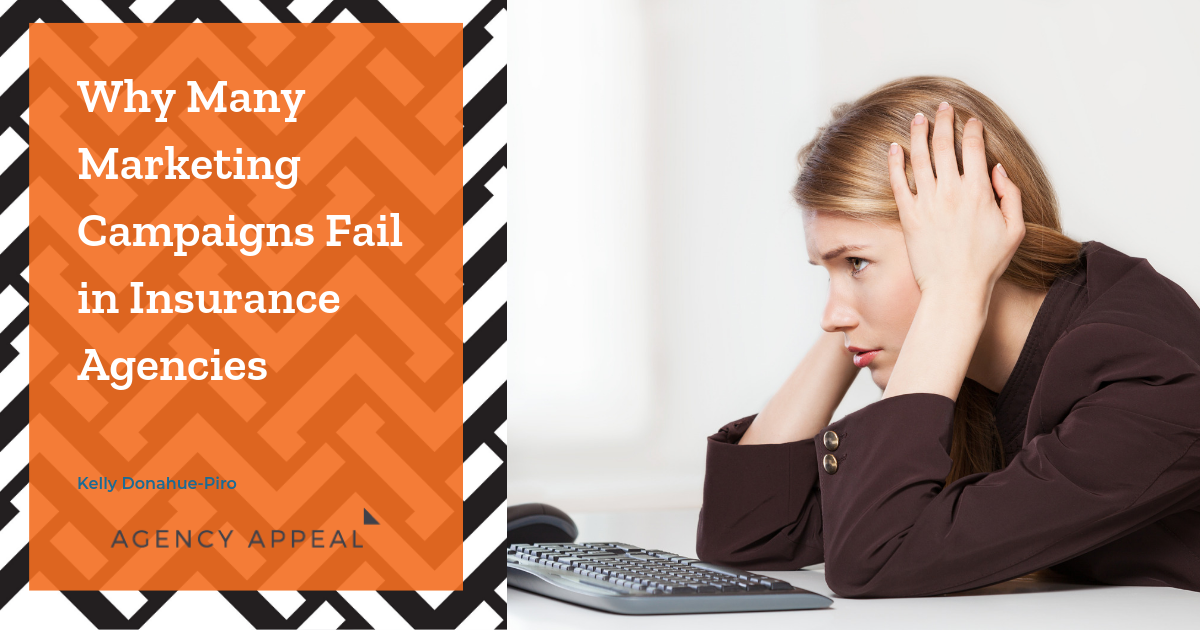Has your insurance agency given up on marketing? Or are you in the mode of occasionally sending a letter here or there, or sometimes mailing a postcard to lost clients? I can officially tell you that running insurance agency marketing campaigns without accountability and structure often isn’t worth the time it takes to design the postcard. In a very cluttered world, how can insurance agencies win at marketing?
One major shift in the insurance space is that agents are increasingly in a blended role of service and sales. With a schedule that is unpredictable every day, oftentimes marketing activities are the first to become inconsistent and sparse. In addition, many agencies have not quite figured out the compensation strategy for how to motivate and incentivize agents who do a bit of everything to make sales on an equal playing field with service.
If you want your agency to grow, you need to make sure there is a dedicated resource for holding people accountable to coordinating follow-up calls and executing marketing strategies. Basically, this has to be someone’s documented responsibility as part of their job in the agency. There can be no excuses of being too busy or forgetting. The ring leader of campaigns needs to make sure you are executing flawlessly.
You may be thinking: how would this look? Isn’t sending a postcard to lost insurance clients enough? The answer is no, and especially if you aren’t going to be consistent. To really see a positive impact and consistent results, you have to be consistently marketing. Here is an example of a winning and profitable win back campaign to recirculate lost and desired business:
- The campaign head honcho runs the list of lost business and scrubs it to get a list of desired win back clients.
- You craft a witty, yet professional marketing message to land the first attack to the desired target.
- Identify the strategy of dripping out the postcards, generally 75-60 days before their renewal. With this strategy you can send them twice per month.
- The agency starts sending the postcards, and suspenses are added to the sales or management system the agency is invested in.
- The first round of calls is made with a scripted and tested voicemail. A follow-up email template is also sent if you have the confirmed email on file.
- If the prospect is not reached, the task is set out for the next week.
- If the prospect is not reached on a follow-up call, the task is set out for one week.
- A final follow-up call is made, and a quick preliminary quote is prepared and mailed to the desired target.
Now you may be thinking — “gee golly, we don’t have time for that!” Remember that you will be filtering the list to only desired targets. Next, quoting them is easy, because generally you only need to update a few pieces of information. They already had some relationship with you; many people prefer to work with someone they are familiar with rather than a total stranger. It’s a win, win, win for your insurance agency. But the challenge boils down to the question — who should be making these calls?
The debate continues about whether this is a function of sales or the people who sell and service. If your sales team is not hitting its sales goals, what a great opportunity for them! If your service team can take the calls and hit home runs, land them there. The challenge comes in when both parties are not interested or not great at making the calls. Then you have to decide whether you should force the issue or hire for it.
If you need any help on websites, brand guides or marketing let us know!
Kelly Donahue-Piro is the Co-Founder of Agency Appeal and President of Agency Performance Partners.


